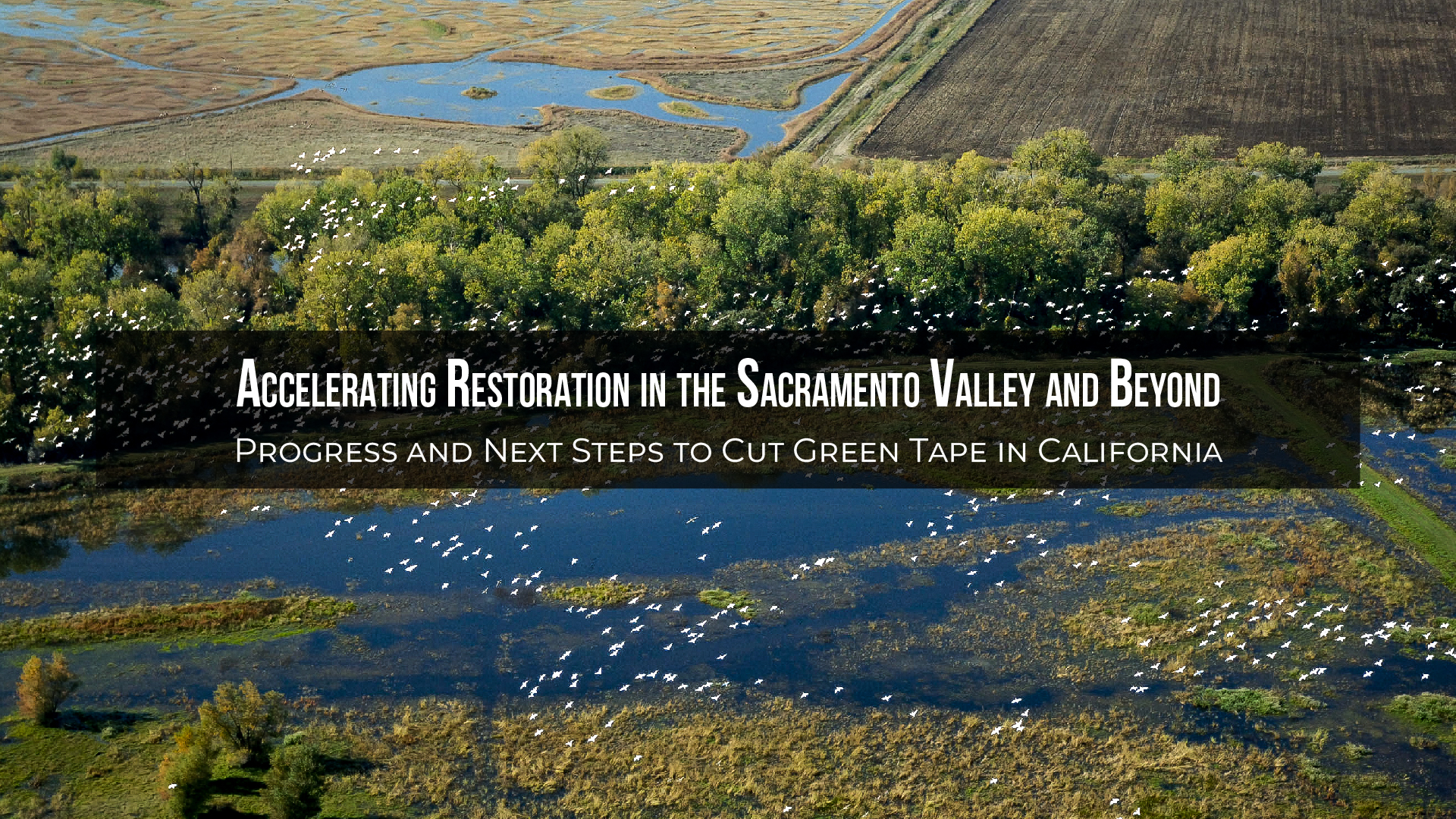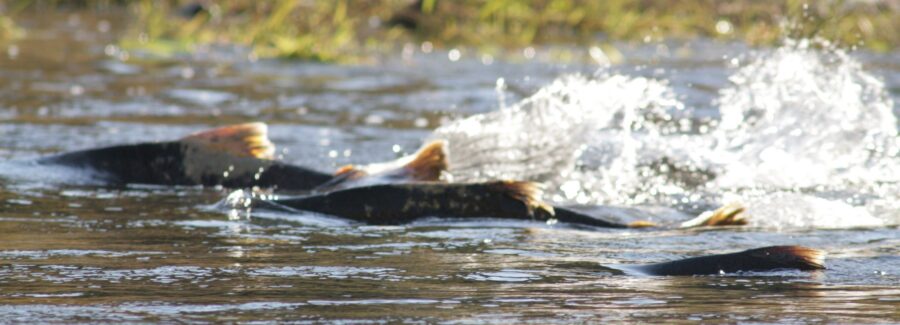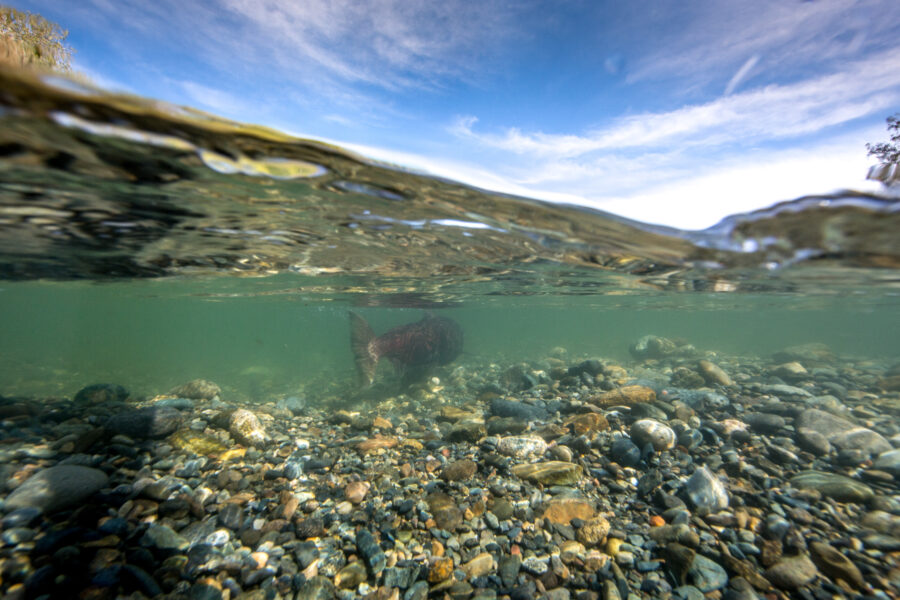
Sustainable Conservation is proud to announce a new report, “Accelerating Restoration in the Sacramento Valley and Beyond: Progress and Next Steps to Cut Green Tape in California.”
Read the full report here.
Read the list of recommendations with agencies, partners, and timelines here.
Authors: Erika Lovejoy, Katie Haldeman, Stephanie Falzone, Shayan Kaveh
Background
California is at the threshold of a transformative era for landscape-level restoration, fueled by unprecedented funding opportunities from the Bipartisan Infrastructure Law, the Inflation Reduction Act, and the anticipated California Climate Bond (Proposition 4, 2024). This funding arrives at a critical time as the state confronts escalating and costly challenges posed by climate change. There is growing consensus that proactive strategies to address climate-related impacts and protect declining species populations are more effective and cost-efficient than reactive measures taken after damage occurs. Taking decisive action now is essential to tackle environmental challenges and enhance resilience for the future.
Restoration practitioners and coalitions are poised to implement landscape-scale restoration projects that reactivate floodplains, improve habitat for species, and bolster our resilience to a changing environment. With new funding and increasing restoration demands, agencies must be ready to manage a rising volume of permitting consultations. To seize this once-in-a-generation opportunity, California needs efficient and effective restoration permitting processes that align with its urgent habitat and climate goals.
While California has made substantial progress in developing accelerated permitting pathways for restoration, challenges remain. A deeper understanding and broader implementation of new permitting tools are essential, as are coordinated efforts to address persistent regulatory and organizational hurdles.
This white paper assesses the current regulatory landscape and provides actionable recommendations to maximize the benefits of existing accelerated permitting pathways, advance coordinated permitting efforts, expand successful programs, and fill the regulatory and institutional gaps to better serve the needs of our ecosystems and all those involved in restoring them.
Report Recommendation Categories
- Facilitate proactive use of efficient restoration permitting pathways statewide
- Create dedicated restoration teams within all regulatory agencies
- Expand successful accelerated restoration permitting pathways
- Create new restoration pathways or efficiencies where gaps exist
- Advance solutions to ongoing restoration challenges
Key Findings
Our analysis, primarily focused on the Sacramento River Basin, was informed by interviews with 39 organizations and over 80 individuals across various sectors, including environmental consulting firms, nonprofits, regulators, California Tribes, private landowners, agriculture, and networks/associations. Several key themes emerged:

Recommendations
Our Recommendations are grouped into five key strategies aimed at enhancing the restoration permitting process and increasing partnerships to accelerate restoration. The recommendations and detailed actions incorporate key interview findings, follow-up research, and Sustainable Conservation’s experience. Many of the recommendations call for collaboration among those who regulate, implement, or are affected by restoration efforts.
The list of recommendations, including involved agencies, partners, and timelines, can be found in Table 1. Recommendations by Agency and Implementation Timeline.
The Path Forward
This white paper is a collective call to action for restoration project proponents, agency officials, California Tribes, environmental organizations, and communities. The progress made so far is a testament to the power of collaborative efforts across these groups. To sustain the momentum, agency leadership should engage in the focused dialogue needed to overcome the remaining challenges to scale up restoration. These challenges include resolving policy, funding, and organizational hurdles; ensuring effective training and technical assistance; managing perceived risks associated with working in sensitive habitats; and shifting from reactive to proactive restoration strategies.
By building on recent successes, committing to innovation, and collaborating effectively, we can ensure that regulatory processes and programs enable ecological restoration at the pace and scale needed to fix existing problems and prepare for an uncertain climate future. Together, we can support the restoration of California’s ecosystems to benefit the environment and the communities that depend on them.

